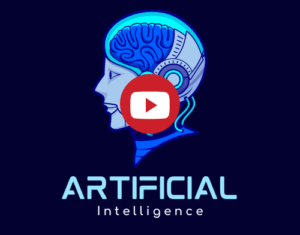What you will Learn
We study how to programme computers to behave and think like people. We research a variety of methods, including natural language processing, neural networks, and machine learning. By comprehending AI, we may create systems that are capable of perceiving, reasoning, and learning from data—tasks that ordinarily demand for human intelligence.
Experience the Future
Discover the realm of Machine Learning with our complimentary Demo and Inquiry Session. Secure your spot today to delve into ML applications and techniques, uncovering the potential of AI firsthand.
Course content

- Understand the basic concepts and goals of Artificial Intelligence.
- Describe various problem-solving techniques used in AI.
- Explain different knowledge representation methods.
- Apply machine learning algorithms to solve real-world problems.
- Understand the fundamentals of natural language processing.
- Explore the ethical considerations and societal impacts of AI.
Click Here to Download ppt
Practice Question
- What is Artificial Intelligence (AI), and what does it aim to achieve?
- How do AI systems solve problems?
- What are the ways AI systems store and use knowledge?
- How does machine learning help solve everyday problems?
- What is natural language processing, and how does it work?
- What are some of the ways AI impacts society and ethics?
- How do AI systems understand and interpret the world around them?
- Can you explain how AI makes decisions?
- Could you give examples of machine learning in action?
- How does AI improve how we communicate with computers?

- Definition and history of AI Major subfields of AI
- AI applications and impact on society
Click Here to Download ppt
Practice Question
- What is Artificial Intelligence, and how would you define it in simple terms?
- Could you give a brief overview of the history of Artificial Intelligence?
- What are some major subfields or branches of AI?
- Can you name a few common applications of Artificial Intelligence in everyday life?
- How does AI impact society, and what are some examples of its influence?
- What are the potential benefits of AI for society?
- Are there any concerns or challenges associated with the widespread adoption of AI?
- How does AI influence industries like healthcare, finance, and transportation?
- Can you explain how AI technologies like machine learning and natural language processing work?
- What are some ways AI is used to improve efficiency and productivity in various sectors?

- Problem-solving techniques Search algorithms (depth-first, breadth-first, A*)
- Heuristic search algorithms (greedy search, hill climbing)
Click Here to Download ppt
Practice Question
- What are problem-solving techniques in AI, and why do we need them?
- How do search algorithms help AI systems find solutions?
- What’s the difference between search algorithms and heuristic search algorithms?
- Can you explain what depth-first search is and how it works?
- How does breadth-first search differ from depth-first search?
- What’s special about the A* search algorithm?
- What is a heuristic search algorithm, and how does it use “guesswork” to find solutions?
- What’s the basic idea behind greedy search?
- How does hill climbing work, and why is it called a “hill climbing” algorithm?
- Can you give examples of where we might use these search techniques in real life?

- Knowledge representation methods (predicate logic, semantic nets, frames)
- Inference and logical reasoning
- Expert systems and rule-based systems
Click Here to Download ppt
Practice Question
- What is predicate logic, and how is it used in artificial intelligence?
- What is inference, and why is it important in artificial intelligence?
- What is an expert system, and how does it emulate human expertise?
- Describe the components of an expert system.
- What are rule-based systems, and how do they make decisions?
- Provide an example of a real-world application where an expert system or rule-based system could be used.
- Explain semantic nets and provide an example of how they can represent knowledge.
- Describe frames as a knowledge representation technique and provide a simple example.
- Explain deductive reasoning and provide an example.
- What is the difference between inductive and deductive reasoning?

- Introduction to machine learning Supervised learning algorithms (linear regression, decision trees, neural networks)
- Unsupervised learning algorithms (clustering, dimensionality reduction)
Click Here to Download ppt
Practice Question
- What is machine learning, and why is it important?
- Explain the difference between supervised and unsupervised learning.
- What are some common applications of machine learning in everyday life?
- What is linear regression, and how is it used in supervised learning?
- Describe decision trees and provide an example of how they make predictions.
- What are neural networks, and how do they mimic the human brain in learning?
- What is clustering, and how is it used in unsupervised learning?
- Explain dimensionality reduction and why it’s important in machine learning.
- What are some challenges associated with unsupervised learning compared to supervised learning?
- Compare and contrast supervised and unsupervised learning algorithms, providing examples of each.

- Introduction to NLP Text preprocessing and tokenization
- Sentiment analysis and text classification
- Named entity recognition and part-of-speech tagging
Click Here to Download ppt
Practice Question
- What is machine learning, and why is it important?
- Explain the difference between supervised and unsupervised learning.
- What are some common applications of machine learning in everyday life?
- What is linear regression, and how is it used in supervised learning?
- Describe decision trees and provide an example of how they make predictions.
- What are neural networks, and how do they mimic the human brain in learning?
- What is clustering, and how is it used in unsupervised learning?
- Explain dimensionality reduction and why it’s important in machine learning.
- What are some challenges associated with unsupervised learning compared to supervised learning?
- Compare and contrast supervised and unsupervised learning algorithms, providing examples of each.

- Introduction to neural networks
- Deep learning architectures (convolutional neural networks, recurrent neural networks)
- Training neural networks and backpropagation algorithm
- Applications of deep learning in AI
Click Here to Download ppt
Practice Question
- What is bias in the context of artificial intelligence, and why is it a concern?
- How can biased data lead to biased outcomes in AI systems?
- Explain the concept of fairness in AI, and why is it important?
- What are some strategies to mitigate bias and ensure fairness in AI systems?
- What are privacy concerns related to AI, and how do they impact individuals?
- Explain the importance of data security in AI systems.
- What are some potential risks associated with the misuse of AI for privacy invasion or security breaches?
- How can encryption techniques be used to enhance the security of AI systems?
- Describe the concept of job displacement due to AI, and provide examples.
- What are some potential ways to address the challenges of job displacement caused by AI advancements?
Description
Our AI course introduces you to the fascinating world of artificial intelligence (AI). You’ll learn how computers can be trained to mimic human intelligence, solve complex problems, and make decisions. The course covers key topics such as machine learning, neural networks, and natural language processing. Through practical exercises and projects, you’ll gain hands-on experience in building AI systems. Whether you’re new to AI or looking to deepen your understanding, this course will equip you with the knowledge and skills to succeed in the exciting field of artificial intelligence.
Certificate
Your Cerificate is close
You are doing greate Keep learning to unlock your certificate .
